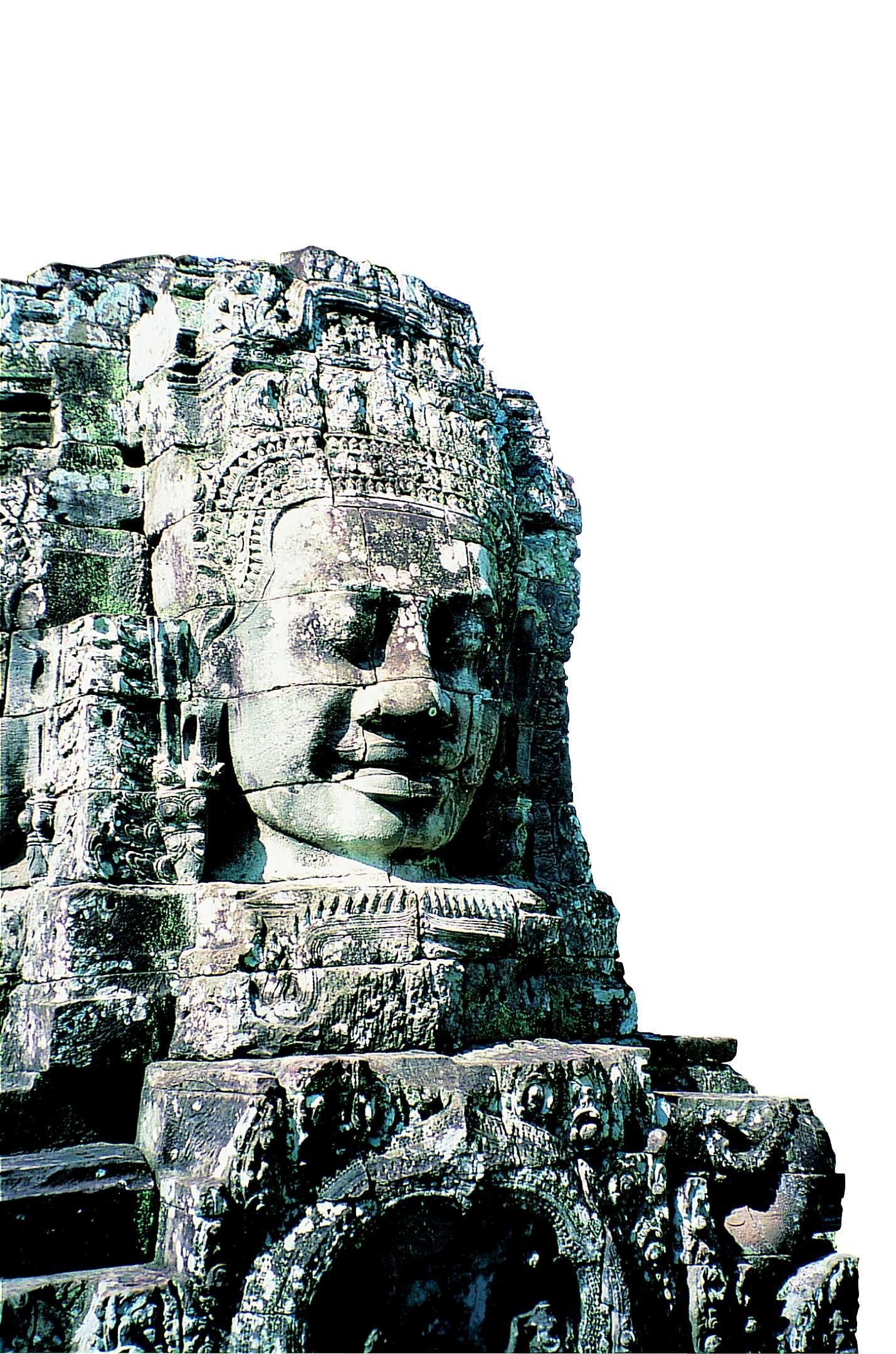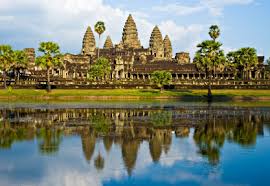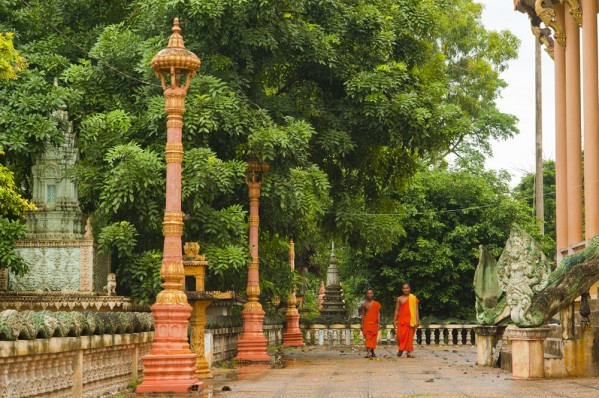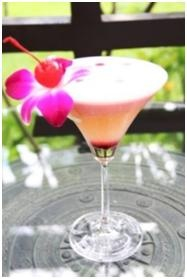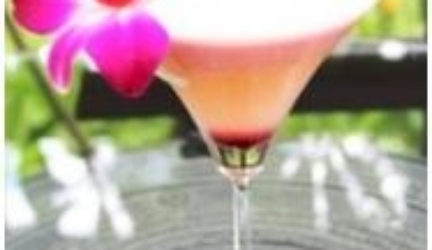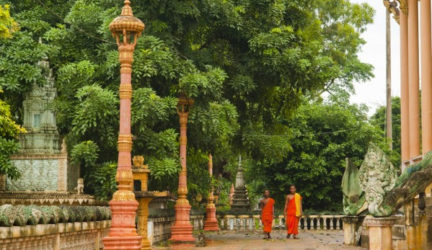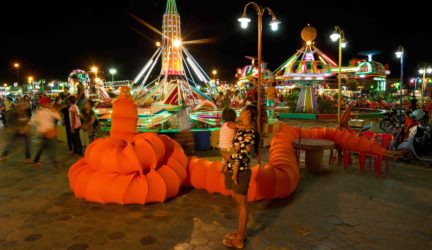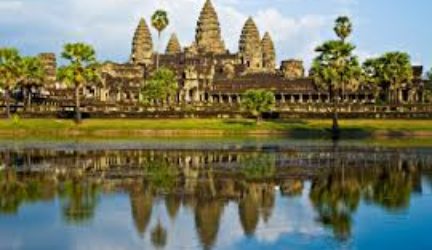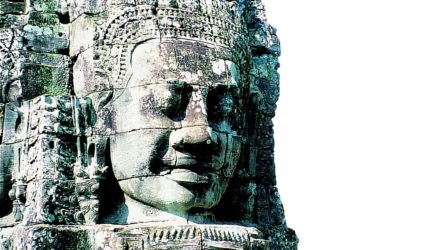Cambodia is destination worthy of spending some serious time delving into
Cambodia is located Southeast Asia, bordered by Thailand to the Northwest, Laos to the Northeast, Vietnam to the East, and the Gulf of Thailand to the Southwest. With so much history and culture it is a destination worthy of spending some serious time delving into its past and present day delights.
Probably the two ‘must do’ areas include Angkor, Siem Reap and Phnom Penh and our list of where to go, what to experience, where to dine and most importantly where to stay starts now.
Siem Reap…
Tucked away from the hustle and bustle, yet only three minutes on a Tuk Tuk to the Old Market, Night Market and Pub Street the historic Raffles Grand Hotel D’Angkor in Siem Reap provides a perfect base from which to explore. It is also less than 10 minutes walking distance to town for those who would prefer to explore on foot. Set amongst 15 acres of serene grounds, the hotel is only 15 mins drive to both airport and Angkor Wat and overlooks the Royal gardens as it is directly opposite the Royal Palace. A location fit for a Goddess! Boasting the largest swimming pool in Cambodia – inspired both in design and size by the ancient bathing pools of the Khmer Kings in Angkor –it provides the perfect relaxation place to recharge over a cocktail.Whilst there make sure you take a ride in the hotels Original Birdcage Elevator. Operated by lift attendants Savat and Chantha, who both grew up in Siem Reap they proudly wear their Colonial Cambodian style uniforms, and often magically know which floor each guest is staying on without being told!
When visiting Siem Reap we recommend you do not miss:
Angkor Wat – is the largest Hindu temple complex in the world. The temple was built by King Suryavarman II in the early 12th century in Yasodharapura the capital of the Khmer Empire, as his state temple and eventual mausoleum. Breaking from the Shaivism tradition of previous kings, Angkor Wat was instead dedicated to Vishnu. As the best-preserved temple at the site, it is the only one to have remained a significant religious centre since its foundation – first Hindu, dedicated to the god Vishnu, then Buddhist. The temple is at the top of the high classical style of Khmer architecture.
Angkor Thom & Bayon – located in present day Cambodia, was the last and most enduring capital city of the Khmer empire, established in the late 12th century by King Jayavarman VII. At the centre of the city is Jayavarman's state temple, the Bayon, with the other major sites clustered around the Victory Square immediately to the north.
Ta Phrom – is the modern name of a temple at Angkor, Siem Reap Province, Cambodia, built in the Bayon style largely in the late 12th and early 13th centuries and originally called Rajavihara. Located approximately one kilometre east of Angkor Thom and on the southern edge of the East Baray, it was also founded by King Jayavarman VII as a Mahayana Buddhist monastery and university. Unlike most Angkorian temples, Ta Prohm has been left in much the same condition in which it was found: the photogenic and atmospheric combination of trees growing out of the ruins and the jungle surroundings have made it one of Angkor's most popular temples with visitors.
Banteay Srei – the “gem” of the Angkor area, the pretty temple of Banteay Srei. The so-called “Citadel of the Women” remains the best-preserved temple in Cambodia. It displays some of the finest examples of classical Khmer art as this small temple is noted for its truly remarkable fine bas-reliefs. Banteay Srei is unique in that it is constructed of pink sandstone, which is seen nowhere else in Angkor.
Discover The Lost City – Phnom Kulen in the Svay Leu and Varin districs, about 60 km from Siem Reap, originally called Mount Mahendraparvata., This is the holy mountain where, when King Jayavarman proclaimed independence from Java in 802, the Angkorian Empire was born. This mountain plateau served as the capital of the first Khmer Empire for more than half a century before it relocated to south Hariharalaya, known today as Rolous. As many as 20 minor temples are found around the plateau, including Rorng Chen temple, the first pyramid built by Angkorian King.
Artisans d’Angkor, established in 1992 in order to support Cambodian arts and crafts, and to help young people find work in their local villages by continuing the practice of traditional arts. Discover how wood and stone carvings, lacquering, gilding, and silk paintings are created.
Phare Ponleu Selpak – Cambodian Circus which started twenty years ago when nine young Cambodian refugees returned home after living in exile. These youngsters had art training abroad, and so they started giving free painting lessons to other youngsters. The following year they widened this to include music, community theatre and circus. In 2001, they had their first Cambodian tour, spreading an educational message on subjects such as land mines, HIV and malaria.
Zipline – Cambodia’s only zipline canopy tour is located inside Angkor Park, not far from the majestic temples, including Angkor Wat and Angkor Thom. There is a reason why only Flight of the Gibbon was approved to locate inside this cherished World Heritage© site located in Siem Reap. Discover this treasure for yourself.
Golf – Play a round at Angkor Golf Resort with its challenging par 72 course or at Siem Reap Booyoung Country Club which is characterised by generous palm-lined fairways, perfectly manicured greens and a choice of five tees on each hole.
Phnom Penh…
Firstly accommodation. You can’t go past Raffles Hotel Le Royal with its gorgeous Art Deco and French style. This is one of Asia’s great classic hotels, dating from 1929 and boasts the best address in Phnom Penh. The hotel sits in beautiful tropical grounds. Originally opened in 1929, and re-opened in 1997, after a sympathetic extension and refurbishment. While there you will not want to miss The Elephant Bar – with its truly colonial atmosphere, wicker chairs, a ceiling painted by local artists (with elephants, of course) and its famous snooker table – with its 1920s and 1930s feel. There’s live piano every day and why not order a Femme Fatale – named after Jackie O, a former guest (spot the black & white photo of her behind the concierge desk)
When visiting Phnom Penh we recommend you do not miss:
The Royal Palace is a complex of buildings, which serves as the royal residence of the king of Cambodia, has been occupied by royalty since it was built in 1860's, with only a period of absence when the country came into turmoil during and after the reign of the Khmer Rouge. Opening hours: -7.30am – 11.00am /2.00pm – 5.00pm
The Silver Pagoda – is located on the south side of the Royal Palace, Phnom Penh. Formerly, it was known as Wat Ubosoth Ratanaram. Most notable is a small 17th century baccarat crystal Buddha (the "Emerald Buddha" of Cambodia) and a life-sized gold Maitreya Buddha decorated with 9584 diamonds, the largest of which weighs 25 carats. It was created in the palace workshops during 1906 and 1907, and weighs in at 90kg. The statue is dressed in royal regalia commissioned by King Sisowath.
National Museum – built in traditional Khmer style. It houses the world's foremost collection of ancient Khmer artistic, archaeological, and religious artifacts from the 4th to the 13th centuries. Over 5,000 pieces are on display, constituting the repository of the Kingdom's cultural wealth. In addition, the roof space is home to a large bat colony!
‘Art Street’ (St. 178) – where you can take in local designer dress shops and cool contemporary art galleries showcasing the funky works of local artists.
Wat Phnom – A small hill crowned by an active wat (pagoda) marks the legendary founding place of Phnom Penh. The hill is the site of constant activity, with a steady stream of faithful trekking to the top and a constellation of vendors, visitors and motor taxis at the bottom. Elephant ride are available. The current temple was last rebuilt in 1926 and received a facelift in 1998. Legend has it that after a particularly heavy flood, a wealthy woman named Daun Penh found a tree on the banks of the Mekong with four statues of Buddha hidden inside. She built a temple in 1434 to house the sacred relics. Today, Wat Phnom remains the highest artificial hill in Phnom Penh and the center of many forms of leisure activities.
Sisowath Quay
The key to connecting the dots is the town's riverside promenade, Sisowath Quay, which runs along the west bank of the Tonle Sap River. This is a 3km strip filled with vendors, locals, tourists and expats, and lined with hotels, restaurants, bars cafes and shops. Every morning the Quay kicks off with a life affirming exercise session to some interesting music – while birds fly and turn in pattern formation overhead. Head down to the riverfront and make your way to the Foreign Correspondents Club (FCC) at 363 Sisowath Quay. This Phnom Penh institution is in a renovated colonial building and its second-floor terrace offers sweeping views over the river.
Street 240 is just behind the Royal Palace and in the heart of Phnom Penh, Street 240 abounds in fashionable boutiques, shops selling arts and crafts, bars and restaurants.
Central Market is also known as Psah Thmey this large market is designed in the shape of a dome with four arms branching out into vast hallways with countless stalls of goods. When it first opened in 1937, it was said to be the biggest market in Asia, and today it still operates as a market. Most visit this market because they want to see the extensive amount of products that are offered for bargain with stalls selling goods ranging from gold and silver, antique coins, money exchange, men's and women's apparel, clocks, books, flowers, food, fabrics, shoes, souvenirs, fish, seafood, dessert, luggage, and more.
Russian Market – also known as Psah Toul Tom Poung. Like the Central Market, there are several jewelers and gold-sellers, but it also carries huge selection of curios, silks and carvings, it is one of the best markets in town to buy fabric. The market opens from 7.00am – 5.00pm.
Udong Mountain
About a one hour drive by tuktuk per way from Raffles Hotel Le Royal Udong is the former capital of Cambodia and it provides an insight to the daily life in the countryside of Cambodia. There are also many opportunities to visit the famous silversmiths and the Muslim minority villages of the Cham. The picturesque views of this magnificent province from the top of the hills cannot be missed.
Don’t miss: AEON Mall, the first of its kind in Cambodia and Vattanak Capital Mall.
Vacation Goddess loves Raffles Hotels & Resorts as each one is an oasis of calm and charm for more visit www.raffles.com
